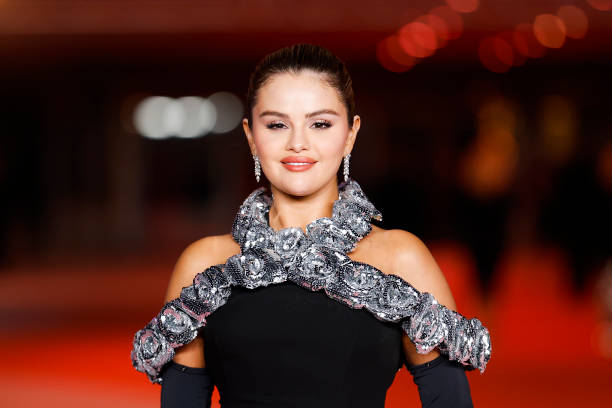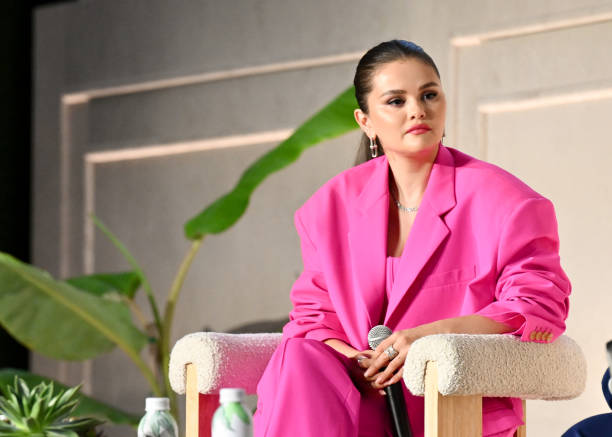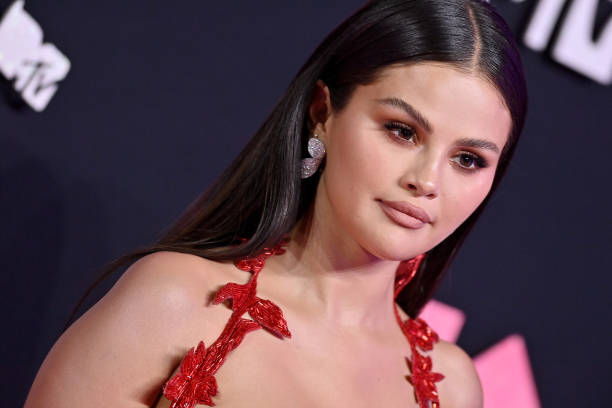Are you ready to embark on a magical journey down the yellow brick road? Join us as we explore the enchanting world of “The Wizard of Oz.” This beloved tale has captivated audiences for generations with its timeless themes and unforgettable characters. From the iconic ruby slippers to the mysterious wizard himself, this story holds a special place in our hearts. In this article, we will delve into the deeper meanings behind “The Wizard of Oz” and discover why it continues to resonate with audiences of all ages.
II. The Hero’s Journey in The Wizard of Oz.
The Wizard of Oz follows the classic Hero’s Journey structure as outlined by Joseph Campbell. Dorothy Gale is called to adventure when a tornado transports her and her house to the magical land of Oz. This serves as the crossing of the first threshold into the unknown.
Dorothy encounters allies along the way, including the Scarecrow, Tin Man, and Cowardly Lion. These allies aid Dorothy on her quest to reach the Emerald City and ask the mysterious Wizard to help her return home.
Dorothy faces many tests and enemies, including the Wicked Witch of the West who tries to take Dorothy’s magical ruby slippers.
After exposing the Wizard as a fraud, Dorothy must find the inner strength and wisdom to understand that she had the power to go home all along. Dorothy’s eventual return home represents the completion of the Hero’s Journey cycle.
The Wizard of Oz exemplifies the Hero’s Journey narrative structure that has influenced many other fantasy and adventure stories. Luke Skywalker in Star Wars and Frodo Baggins in The Lord of the Rings follow similar arc types, leaving home, meeting allies, facing enemies, and ultimately returning home transformed by their quest.
However, Dorothy’s story remains unique in its clever subversion of our expectations. While we assume the Wizard will help Dorothy, his false powers underscore her own inner strength.
III. The Cultural Themes in The Wizard of Oz.
As a classic film made during the Great Depression, The Wizard of Oz explores numerous cultural themes relevant to 1930s America. For instance, Dorothy’s journey resonates with the social upheaval of the time period.
Dorothy is displaced from her home by dangerous forces, much like many Americans during the Dust Bowl and Great Depression eras. Dorothy’s longing to return home reflects the national yearning for prosperity and stability during an uncertain time.
Politically, the story explores the role of authority in society. The Wizard turns out to be a fraud, suggesting political leaders may not live up to the public’s idealized view of them.
The Scarecrow demonstrating his already ample wisdom once given authority represents the capabilities of the common man. The story champions everyday people’s strengths.
Themes of industrialization also course through the film, from the Tin Man’s desire for a heart to the Wizard’s smoke-and-mirrors machinery. The story explores American ambivalence about technology and modernization. Ultimately, human values like wisdom and courage prove more powerful tools.
Other classics tackle similar cultural themes, like economic turmoil in The Grapes of Wrath and societal roles in To Kill a Mockingbird. Yet The Wizard of Oz’s whimsical framing provided a comforting American myth during hard times.
IV. The Significance of The Wizard of Oz.
The Wizard of Oz remains an icon of American cinema more than 80 years after its release. At the time, the film’s elaborate effects and fantasy story enthralled depression-era audiences. Judy Garland’s expressive performance and musical numbers electrified viewers. Critics praised the film’s technical achievements and family appeal.
Though expensive to produce, The Wizard of Oz became MGM’s most successful release of 1939. Its initial box office success saved the studio from bankruptcy. The film won Academy Awards for its music and Garland’s iconic song “Over the Rainbow.”
Annual television airings introduced the film to new generations of fans. The Wizard of Oz grew into a pop culture touchstone, inspiring tributes and homages across all media.
Signature moments like the Wicked Witch’s cackle or Dorothy’s ruby slippers remain visual shorthand in American culture. The story’s themes of home, family, and self-actualization resonate with audiences young and old.
The Wizard of Oz’s imaginative world has influenced many fantasy books and films. Its clever characters like the Cowardly Lion and Wicked Witch have become archetypes in literature and entertainment. More than any technical achievement, the film’s uplifting story and celebration of human values explain its lasting legacy.
V. The Wizard of Oz as a Myth for Our Age.
The Wizard of Oz has taken on mythic resonance thanks to its timeless storytelling. The film draws on archetypal characters and settings found in myths across cultures.
Dorothy undertakes a metaphorical journey of self-discovery. Like many mythic heroes before her, Dorothy is an ordinary girl forced to dig deep and find bravery, wisdom, and heart on her odyssey.
Dorothy’s companions represent different facets of human personality. Her shadow self lurks in the form of the Wicked Witch, reflecting the internal struggle between good and evil we all face. The journey along the Yellow Brick Road takes Dorothy through beautiful and terrifying landscapes, not unlike the epic journeys of Odysseus or Gilgamesh.
The Wizard of Oz distills the hero myth into an accessible, American fairy tale. The Scarecrow embodies the idea that we already have the brains we seek. The Tin Man demonstrates we already have a heart.
Though less fantastical than legends of old, The Wizard of Oz taps into the same eternal truths about self-reliance, courage in the face of fear, and the importance of friends.
In his famous hero’s journey, Arthur pulls the sword from the stone to become king. Dorothy already has the power to return home and saves herself. Her mythic journey exemplifies virtues and shows anyone can be a hero.
VI. The Legacy of The Wizard of Oz.
Few films have permeated popular culture as thoroughly as The Wizard of Oz. Its imagery and characters are woven into the fabric of American cinema and pop culture.
Dorothy’s journey still resonates with audiences young and old. The film’s themes of home, family, friendship, and self-discovery are universal. Musical numbers like “Somewhere Over the Rainbow” and “We’re Off to See the Wizard” are forever engrained in the American songbook.
Iconic lines like “Toto, I’ve a feeling we’re not in Kansas anymore” and “Pay no attention to the man behind the curtain” are still widely referenced in films and TV shows today.
The Wizard of Oz elevated the fantasy film genre. Later blockbusters like Star Wars and Disney animations borrowed imagery like the Yellow Brick Road and anthropomorphic characters from Oz. The Wicked Witch expanded the archetype of the fantasy villainess. Her green skin and black garb became shorthand for evil witch characters.
More than simple nostalgia explains why The Wizard of Oz remains beloved and oft-referenced in the 21st century. It has risen to the status of modern myth thanks to its resonant themes and instantly recognizable iconography. The dreams and virtues Dorothy embodies still speak to our shared humanity.
VII. The Making of The Wizard of Oz.
The Wizard of Oz endured a turbulent production to become one of Hollywood’s most iconic films. MGM fast-tracked an adaptation of L. Frank Baum’s novel into production in 1938. Multiple writers revised the script to add original musical numbers and create a tone less frightening than the book.
After originally cast as Dorothy, Judy Garland won the lead role when MGM loaned Shirley Temple to another studio. Multiple directors worked on Oz, each refining the film’s style before Victor Fleming received main credit. Extensive costumes and prosthetic makeup transformed characters like the Scarecrow and Cowardly Lion.
Filming faced delays and accidents. Buddy Ebsen, originally cast as the Tin Man, suffered a severe allergic reaction and was replaced by Jack Haley. Margaret Hamilton endured facial burns in the scene when Dorothy douses her alter ego the Wicked Witch.
The Wizard of Oz cost MGM an extraordinary $2.8 million during the Depression era. While critics applauded the film’s spectacle, early box office returns disappointed.
Only after subsequent re-releases did The Wizard of Oz become profitable and acclaimed as a classic family musical. Its famous imagery and Wizard’s balloon escape awed 1939 audiences.
Through its numerous production challenges, The Wizard of Oz persevered to become an immortal American fable. Garland’s star-making performance and songs like “Over the Rainbow” tower over the film’s technical achievements. The Wizard of Oz reminds us heart and brains go further than flashy effects or costumes.
VIII. The Music of The Wizard of Oz.
The Wizard of Oz revolutionized the movie musical with its catchy, moving songs and clever use of music to tell the story. Composer Harold Arlen and lyricist E.Y. Harburg crafted an original song score that has become one of Hollywood’s most beloved.
The yearning ballad “Over the Rainbow” poignantly expresses Dorothy’s longing for somewhere beyond her Kansas home. Its sweeping melody and lyrics capture her hope for new adventures and experiences. Garland’s rendition earned her an Academy Award.
Songs like “Ding-Dong! The Witch Is Dead” and “We’re Off to See the Wizard” advance the story in rousing, theatrical fashion. “If I Only Had a Brain/Heart/Nerve” gives musical voice to the Scarecrow, Tin Man, and Lion’s desires. The score deftly shifts between rollicking production numbers and wistful solos to amplify each moment.
The Wizard of Oz popularized the movie musical format. Its songs have been covered by numerous artists and adapted for the stage. Numbers like “Over the Rainbow” and the yearning “If I Only Had…” proved important templates for Disney’s later movie musicals. Thanks to its masterful integration of story, characterization, and music, The Wizard of Oz cast a long shadow over Hollywood songwriting.
IX. The Wizard of Oz and Gender Roles.
The Wizard of Oz flips traditional gender roles with Dorothy as its brave, resourceful protagonist. While female protagonists were rare in 1930s Hollywood, Dorothy drives the story as an active hero on a quest. She battles the Wicked Witch, rescues the Scarecrow, and solves problems using her wits.
The contrast between dowdy, repressed Dorothy and the wicked witch’s flamboyant power creates nuanced female archetypes. Glinda the Good Witch wields magic while remaining kind and nurturing.These varied portrayals offered Depression-era audiences multi-dimensional women’s roles rare in adventure films dominated by heroic male leads.
Dorothy’s journey reflects themes of young adulthood and self-actualization that resonated powerfully with 20th century women. The film’s message of empowerment inspired 1970s feminists. While debated as a feminist figure, Dorothy expanded the possibilities for Hollywood’s female characters.
Later films like Thelma and Louise and Wonder Woman built upon the active heroism Dorothy exemplified. The Wicked Witch remains one of cinema’s great villainess archetypes. The Wizard of Oz gave viewers their first glimpse into the rich possibilities of women’s roles in fantasy and adventure stories.
X. The Wizard of Oz and Race.
The Wizard of Oz has drawn some critique for its depiction of race, though it also broke barriers in Hollywood’s racist landscape. Early drafts presented more offensive caricatures of the Scarecrow and Lion until the NAACP intervened.
Their costumes and makeup still evoke racist iconography of the rural South. Friendly and helpful, their characters play into the “magical negro” stereotype.
Lacking authentic African American voices, these portrayals reduce racial diversity to simplistic stereotypes in contrast to the film’s more nuanced female roles. Contemporary viewers criticize parts of Oz as products of the racist culture that produced them.
Yet Oz also advanced inclusivity in surprising ways. In an era of segregation, the film featured African American performer Hattie McDaniel in a visible role as Aunt Em’s maid.
The Munchkins represented white and black little people as equals. Though imperfect, The Wizard of Oz took risks to bring marginalized groups into wider visibility.
Later films like Black Panther and Do the Right Thing offered more authentic representation. Yet Oz’s small steps forward reflect Hollywood’s halting progress. The fantasy of Oz modeled inclusivity even as American reality lagged behind.
XI. The Wizard of Oz and Disability.
The Wizard of Oz is one of the earliest major Hollywood films to feature disabled characters in prominent roles. The Scarecrow, Tin Man, and Lion each cope with disabilities both physical and mental. They struggle moving fluidly, expressing emotions, or manifesting courage.
Dorothy accepts the trio’s differences without judgment. Their quest for brains, heart, and courage reveals their disabilities as subjective. Each character proves his worth and ability to heroically aid Dorothy. The Wizard ultimately empowers them to believe in their own gifts.
The Wizard of Oz thus champions embracing disability as part of human diversity. While some tropes haven’t aged well, the Scarecrow and Tin Man’s prominent roles countered ableist views. Dorothy values their whole selves beyond any disability.
Later films built on this portrayal, from autistic savant Raymond in Rain Man to the facially deformed John Merrick in The Elephant Man. The Wizard of Oz’s compassion helped pave the way for more just representations of disability on screen. The film reflected how disabilities need not inhibit heroism or humanity.
XII. The Wizard of Oz and Queer Theory.
Queer theorists have analyzed The Wizard of Oz’s rich gender symbolism and camp sensibility as encoded reflections of LGBTQ culture.
Dorothy’s journey over the rainbow resonates as a metaphor for coming out and seeking acceptance. She lands in a Technicolor fantasy world where she can fully express herself. The story emphasizes chosen families, acceptance, and being empowered by embracing one’s true self.
The Wizard’s masks and grand illusions parallel the campy drag culture and mistaken identities common in LGBTQ communities, both as entertainment and survival. Characters like the Cowardly Lion embrace traditionally “unmanly” sensitivity shunned by society.
While subtle, Oz’s journey resonates with universal LGBTQ experiences, from feeling out of place to seeking community and becoming empowered through self-love. Oz promotes chosen families and acceptance of those once seen as “different.”
Later films would tell queer stories explicitly. Yet Oz’s allegorical fantasy world offered coded signals of inclusion to 1930s LGBTQ viewers. Oz validated those who feel they don’t belong. Its rainbow imagery celebrates the beauty in all people courageous enough to be their authentic selves.
XIII. The Wizard of Oz and Adaptations.
The Wizard of Oz remains fertile creative soil for new adaptations that reimagine Baum’s story in various styles and contexts. The 1939 musical film looms large, but Oz’s themes have been reinterpreted across genres.
Stage productions like The Wiz reimagined the journey to Oz in an African American musical context. The Wiz opened doors for inclusive casting of traditionally white roles. Gregory Maguire’s novel Wicked explored the Wicked Witch’s origin story from her perspective, inspiring the hit Broadway show.
Oz’s rich universe allows for creative riffing. Zack Snyder’s brooding film Oz the Great and Powerful added backstory to the Wizard’s origins. Disney’s Oz the Great and Powerful offers a family-friendly animated reimagining. These adaptations expand the fantasy world in new directions.
While remaining true to its message, each adaptation remakes Oz anew. The story has entered the cultural commons, available for artists’ imaginations. Testing new perspectives keeps Oz fresh and meaningful. After all, the magic of Oz lies not in any single telling but in the power of its enduring themes.
What is The Wizard of Oz famous for?
The Wizard of Oz is one of the most iconic and influential films in cinema history. Released in 1939, it was one of the first major Technicolor films. I’m amazed by its groundbreaking use of fantasy storytelling and memorable characters.
The Wizard of Oz is famous for its imaginative world of munchkins, witches, and the Emerald City. It also features the classic musical number “Over the Rainbow” sung by Judy Garland as Dorothy. The film’s creative use of Technicolor and fantasy storytelling influenced many later films.
What is the moral of The Wizard of Oz?
For me, the key moral of The Wizard of Oz is to appreciate what you have instead of always wanting more. At the start, Dorothy desperately wants to leave Kansas for someplace more exciting. But after her adventures in Oz, she realizes there’s “no place like home.”
Her ruby slippers had the power to take her back home all along. The Scarecrow, Tin Man, and Cowardly Lion also learn they already possess the traits they think they lack. The Wizard himself turns out to be an ordinary man. So the film teaches us to be thankful for what we have.
Why is it called The Wizard of Oz?
The Wizard of Oz gets its name from the fictional wizard who rules the Land of Oz that Dorothy visits. In the original 1900 book by L. Frank Baum, the wizard is named Oz.
When Dorothy and her friends finally meet the mysterious wizard after their long journey, they discover he’s just an ordinary man from Omaha who uses tricks to make himself seem powerful.
So while “Oz” sounds like a magical name, it’s revealed to be the wizard’s mundaneearthly name. The title refers to his false image as a great wizard.
What do the ruby slippers symbolize in The Wizard of Oz?
In the film, Dorothy’s magical ruby slippers represent the power she’s had all along to make her dreams come true. The slippers have the power to grant wishes and take her back home to Kansas. But Dorothy had to believe in herself before she could harness their power.
Her journey taught her to appreciate home and realize she already had the ability to make her dreams come true. The slippers remind us we often already have the power to achieve our goals if we just believe in ourselves.
Why did Dorothy wear red slippers?
In L. Frank Baum’s original book, Dorothy wears silver shoes. But for the Technicolor film, they wanted an eye-catching bold color to show off the new technology. The art department decided to change them to ruby red slippers.
Against the yellow brick road, Dorothy’s glittering slippers draw attention and emphasize their magical importance. They made her feet the focal point. The color also contrasts nicely with her blue gingham dress. Making them red rather than silver helped make them an iconic symbol of the film.
What does the flying monkeys represent in The Wizard of Oz?
The flying monkeys are seen as minions who do the Wicked Witch of the West’s bidding without question. As their leader, she controls them to carry out her evil wishes. The flying monkeys symbolize a lack of free will and independence.
They also represent how corrupt leaders can influence the populace for evil through fear and control. The scary winged monkeys contrast with Dorothy’s companions who think and act for themselves. Overall, they serve as a warning about blind allegiance and losing one’s free will.
What are the hidden symbols in The Wizard of Oz?
The Wizard of Oz contains many subtle and hidden symbols that reflect the social issues and politics of the time period:
- The Yellow Brick Road represents the gold standard debate. The ruby slippers symbolize monetary policy.
- The Wicked Witch of the West represents industrial capitalists who controlled politics.
- The Munchkins are the oppressed labor force.
- The Scarecrow represents farmers. The Tin Man represents industrial workers.
- The Cowardly Lion embodies William Jennings Bryan, the populist leader of the time.
- The Emerald City symbolizes Washington D.C. and false prosperity.
L. Frank Baum claimed he did not intentionally include political symbols, but many can be read into his work. The story does seem to critique the industrialist control and economic policy of the era.
What does the lion in The Wizard of Oz represent?
The Cowardly Lion in The Wizard of Oz represents politician William Jennings Bryan. Bryan was known for his inspiring oratory but inability to effect meaningful reform. The lion believes he lacks courage, just as Bryan was criticized as being “cowardly” for backing away from his populist movement.
The Lion learns he had courage all along, just as Bryan’s legacy showed he had stronger morals than critics suggested. The lion’s journey thus symbolically represents Bryan’s political career and fight against elite control.
What does the Yellow Brick Road represent in The Wizard of Oz?
The iconic Yellow Brick Road in The Wizard of Oz represents the gold standard debate in the late 1800s. The road leads to the Emerald City, symbolizing the prosperous capital of Washington D.C. Dorothy’s magical silver slippers get reinvented as sparkling ruby in the film, representing silver vs gold monetary policy.
During the Populist movement, debates raged over gold vs silver backing US currency. The meaning of the Yellow Brick Road changed over time, but its origins represent an allegory about economic policy.
What does the tornado symbolize in The Wizard of Oz?
The powerful tornado twists Dorothy’s farmhouse up into the air and transports her to the magical Land of Oz. This represents the late 1800s Populist movement that shook up American politics. The chaos of the tornado parallels the turmoil brought by the Populist challenge to the economic establishment.
Dorothy’s journey then becomes a political allegory. The tornado disrupts the status quo, taking Dorothy on a journey that allows her to see things differently back home. It sweeps away the existing power structure, giving rise to Dorothy’s new perspectives.
What does the Emerald City symbolize?
In The Wizard of Oz, the glittering Emerald City represents Washington D.C. As Dorothy journeys down the Yellow Brick Road on the gold standard debate, she is led to the prosperous capital city where the mysterious wizard should grant her wishes.
However, when she looks behind the curtain, the wizard is revealed to be a fraud – just like the false prosperity and power of the political capital. The Emerald City illustrates how government and leaders can create illusions of prosperity through tricks and rhetoric. But their power is not as real as it seems.
What does the silver shoes represent in The Wizard of Oz?
Dorothy’s magical shoes were silver in L. Frank Baum’s book, representing the Populist argument for silver-backed currency instead of the gold standard. The shoes had the magic power to solve problems and grant Dorothy’s wishes.
This symbolized the Populist belief that increasing the money supply with silver would empower the people, especially farmers and industrial laborers. While the movie changed them to ruby for a color spectacle, the shoes still represent using economic policy reform to improve people’s lives.
Why did Dorothy click her heels?
Dorothy clicks the heels of her magical ruby slippers together three times to activate their power and transport her home. The dramatic heel-clicking reminds her that she possessed the power to make her dreams come true all along.
Dorothy follows the advice of Glinda the Good Witch, who reveals it is through her own inner strength that the shoes can take her where she wants to go. Her heel-clicking reflects her newfound confidence in herself to change her circumstances for the better. It signals her shift to empowerment and belief in her own abilities.
Why was Dorothy important in the Wizard of Oz?
As the protagonist and heroine, Dorothy plays a central role in The Wizard of Oz. She embodies innocent, wholesome values and brings emotional depth to her quest. Dorothy grounds the story as an ordinary girl we can relate to, thrown into extraordinary circumstances.
Her wisdom, courage, and sincerity contrast with the illusions in Oz. Dorothy’s dog Toto exposes the Wizard’s trickery, but she also sees through pretense with simple logic. Her stalwart companions look to her for leadership. Dorothy’s earnestness makes her self-discovery and growth inspiring. She represents virtuous American values overcoming adversity through inner strength.
Why did they change Dorothy’s shoes from silver to red?
In L. Frank Baum’s book, Dorothy wears silver shoes, representing the silver monetary policy debate. But in the 1930s film, they wanted to show off the new Technicolor, so the studio changed them to a brilliant red. Against the yellow brick road, Dorothy’s ruby slippers are eye-catching.
Focusing attention on her feet emphasized their magical importance. The glamorous red sequined shoes made them iconic costume pieces. While they lost the original political symbolism, the ruby slippers’ fame outshone the silver shoes. The bold, luxurious red shoes better fit the extravagant Hollywood spectacle.
Conclusion:
“The Wizard of Oz” is more than just a children’s story. It is a myth for our age, revealing eternal truths about our humanity. From the dog who exposes deceptions and manipulations to the hero’s journey undertaken by Dorothy and her companions, this tale holds a mirror to our own experiences and challenges.

Whether it’s the quest for home or the search for courage, “The Wizard of Oz” continues to inspire and resonate with audiences worldwide. So click your heels together and let the magic of this timeless story transport you to a world where dreams come true. Consider reading other articles like >>>> Facts Behind The Wizard of Oz to learn more.
I am an accomplished author at Fact Finders Company LLC, a renowned publishing house based in New York City. With a passion for research and a talent for writing, I have contributed to numerous non-fiction titles that explore a wide range of topics, from politics and history to science and technology. My work has been widely praised for its accuracy, clarity, and engaging style. Nice Reading here at Fact After Fact.








